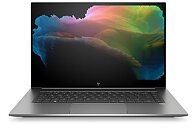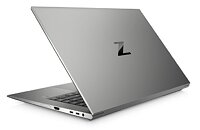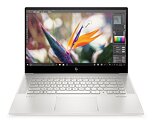- Joined
- Aug 19, 2017
- Messages
- 2,232 (0.91/day)
Today, HP Inc. unveiled its newest Z by HP mobile workstation and HP ENVY portfolio - designed for creators who push the envelope of what's possible. The HP ZBook Studio, HP ZBook Create, and the HP ENVY 15 are the latest additions to the HP Create Ecosystem, which launched at Adobe MAX in 2019.
The powerful line-up enables all levels of creators, including consumers, prosumers and professionals, to capture, create, and bring to life digital concepts and ideas that can be shared, enjoyed, and experienced. In the past, creators had to choose between heavy workstations or bulky gaming devices to get the power they require for work and play. Today, HP is pushing the boundaries of engineering and creative productivity by allowing photographers, vloggers, graphic designers, architects, film makers, and everyone in between, to achieve what was never thought possible.


"As we continue learning how to adapt to new ways of working and learning during these unprecedented times, one thing remains constant - everyone is a creator and needs the right tools to bring their creations to life," said Alex Cho, president, Personal Systems, HP Inc. "Whether it's the ZBook Studio, the most powerful workstation of its size, or the ENVY 15 with gaming-class thermal solutions, HP is giving professional creators the power needed for their next breakthrough and anyone who wants to create, the versatility needed to power their passion."
With a rich history of PC innovations for the creative community, HP is the ideal technology partner for the next generation of creators. For Gen Z creators, the practice of creativity is instinctual, and they need a device that helps bring their expressions to life as quickly as the latest memes and trending topics come and go. For those who create professionally - from design, modeling, coding, or application design - Z by HP solutions are perfect small form-factor powerhouse solutions for resource-intensive tasks. The HP ENVY portfolio, including the newest ENVY 15, is built for today's consumers and prosumers who regularly edit photos and video, or develop graphics or web designs.
"Creatives need the power to work from anywhere," said Bob Pette, vice president and general manager of professional visualization, NVIDIA. "Accelerated by NVIDIA Quadro and GeForce RTX GPUs and backed by NVIDIA Studio drivers, HP's ZBook Studio, ZBook Create and ENVY 15 deliver on the performance, mobility and reliability that creators demand."
HP's ZBook Studio, ZBook Create, and ENVY 15 laptops with RTX GPUs are members of NVIDIA's RTX Studio program, featuring acceleration for demanding ray-traced rendering and AI creative workloads, and Studio drivers for outstanding reliability.
Z by HP: Power Your Breakthrough
The HP ZBook Studio, the world's most powerful mobile workstation per cubic centimeter, and HP ZBook Create, the world's smallest 15" notebook for creation and gaming, allows users to create on-the-go unlike ever before. There has been a 47% growth in thin and light form factors over the past three years, but most devices are still not designed for demanding workflows with professional applications, graphics, or color accuracy. The latest additions to the Z by HP portfolio are purpose-built and re-engineered from the ground up to meet the demanding needs of the most creative applications and workflows and provide optimal experiences today and in the future.
In 2015, the Scientific and Engineering Award was awarded by the Academy of Motion Picture Arts and Sciences for the development of the HP LP2480zx Professional DreamColor display. The ZBook Studio and ZBook Create bring the first DreamColor display with 17.5 hour, all-day battery life to visual effects artists, animators, and colorists worldwide, enabling them to accurately represent their content on-screen from anywhere because of DreamColor's built-in colorimeter for automatic self-calibration, 100% sRGB and Adobe RGB for accuracy, and over a billion colors for smoother shading and more consistent gradients.
HP ZBook Studio and HP ZBook Create
Performance:
Design:
Sustainability:

HP ENVY: Power Your Passion
HP ENVY 15
Design:
Create:
Performance:

HP ENVY Portfolio:
Pricing and Availability:
View at TechPowerUp Main Site
The powerful line-up enables all levels of creators, including consumers, prosumers and professionals, to capture, create, and bring to life digital concepts and ideas that can be shared, enjoyed, and experienced. In the past, creators had to choose between heavy workstations or bulky gaming devices to get the power they require for work and play. Today, HP is pushing the boundaries of engineering and creative productivity by allowing photographers, vloggers, graphic designers, architects, film makers, and everyone in between, to achieve what was never thought possible.


"As we continue learning how to adapt to new ways of working and learning during these unprecedented times, one thing remains constant - everyone is a creator and needs the right tools to bring their creations to life," said Alex Cho, president, Personal Systems, HP Inc. "Whether it's the ZBook Studio, the most powerful workstation of its size, or the ENVY 15 with gaming-class thermal solutions, HP is giving professional creators the power needed for their next breakthrough and anyone who wants to create, the versatility needed to power their passion."
With a rich history of PC innovations for the creative community, HP is the ideal technology partner for the next generation of creators. For Gen Z creators, the practice of creativity is instinctual, and they need a device that helps bring their expressions to life as quickly as the latest memes and trending topics come and go. For those who create professionally - from design, modeling, coding, or application design - Z by HP solutions are perfect small form-factor powerhouse solutions for resource-intensive tasks. The HP ENVY portfolio, including the newest ENVY 15, is built for today's consumers and prosumers who regularly edit photos and video, or develop graphics or web designs.
"Creatives need the power to work from anywhere," said Bob Pette, vice president and general manager of professional visualization, NVIDIA. "Accelerated by NVIDIA Quadro and GeForce RTX GPUs and backed by NVIDIA Studio drivers, HP's ZBook Studio, ZBook Create and ENVY 15 deliver on the performance, mobility and reliability that creators demand."
HP's ZBook Studio, ZBook Create, and ENVY 15 laptops with RTX GPUs are members of NVIDIA's RTX Studio program, featuring acceleration for demanding ray-traced rendering and AI creative workloads, and Studio drivers for outstanding reliability.
Z by HP: Power Your Breakthrough
The HP ZBook Studio, the world's most powerful mobile workstation per cubic centimeter, and HP ZBook Create, the world's smallest 15" notebook for creation and gaming, allows users to create on-the-go unlike ever before. There has been a 47% growth in thin and light form factors over the past three years, but most devices are still not designed for demanding workflows with professional applications, graphics, or color accuracy. The latest additions to the Z by HP portfolio are purpose-built and re-engineered from the ground up to meet the demanding needs of the most creative applications and workflows and provide optimal experiences today and in the future.
In 2015, the Scientific and Engineering Award was awarded by the Academy of Motion Picture Arts and Sciences for the development of the HP LP2480zx Professional DreamColor display. The ZBook Studio and ZBook Create bring the first DreamColor display with 17.5 hour, all-day battery life to visual effects artists, animators, and colorists worldwide, enabling them to accurately represent their content on-screen from anywhere because of DreamColor's built-in colorimeter for automatic self-calibration, 100% sRGB and Adobe RGB for accuracy, and over a billion colors for smoother shading and more consistent gradients.
HP ZBook Studio and HP ZBook Create
Performance:
- Creators can design, edit, render, and stream from anywhere no matter how complex the workflow, with choices of Quadro or GeForce graphics and next-gen Intel Core and Intel Xeon processors.
- Creative pros today want to multi-task while projects are rendering in the background without slowing down other applications. The ZBook Studio is the most powerful mobile workstation per cubic centimeter for rendering.
- Z Power Slider gives the user complete control over the type of performance and acoustics for specific workflows. At the same time, the Z Predictive Fan Algorithm intelligently manages fan behavior based on the kind of work and applications used by creatives.
- New vapor cooling chamber and liquid crystal polymer, gaming-class thermals are designed to equip users with the ability to run at maximum performance, as needed. The custom advanced cooling system pushes air away from the CPU and GPU in 2-dimensional paths, unlocking power density that is 2.8x higher gen to gen in a laptop design that is up to 22% smaller.
Design:
- The ZBook Studio, the world's most powerful mobile workstation per cubic-centimeter, and ZBook Create pack a nearly borderless screen experience - 22% reduction in volume from the previous generation - alongside an up to 17.5-hour long-lasting battery life into a lightweight aluminium exterior, bringing creators a color-accurate laptop with all-day battery life.
- The Z Command Keyboard is designed specifically for creators for a seamless transition from other products, with a familiar keyboard layout for shortcuts, and ultra-quiet keys for the perfect creative flow without interruptions.
- World's best audio experience on a 15.6" notebook9 for creation and gaming provides rich audio with 150 Hz roll-off bass and speakers custom-tuned by Bang and Olufsen to surround users in a rich sound space, featuring the most powerful speakers with the highest levels of bass on any HP notebook.
Sustainability:
- The world's first mobile workstation with ocean-bound plastics, the highly recyclable and lightweight aluminium exterior provides 5x the abrasion resistance of painted carbon fiber and still complies with MIL-STD 810G testing.

HP ENVY: Power Your Passion
HP ENVY 15
Design:
- Minimalist design nods throughout this head-turning device, with a sophisticated aluminium chassis and diamond-cut design and is the first ENVY with a layer of glass on top of the touchpad for a smooth-touch experience.
- Available across all new HP ENVY devices this year is the all-in-one keyboard, which includes easily accessible buttons for power, camera shutter, mute mic, fingerprint reader, and HP Command Center.
Create:
- Creators desire devices with a stunning display, powerful performance - all with long battery life and connectivity and the new ENVY 15 delivers.
- Digital creations take on a new level of details and realism with 4K OLED VESA certified DisplayHDR True Black display. It features 100% DCI-P3 color gamut, 100,000:1 contrast ratio with 400 nits brightness. Every 4K display is color calibrated to meet Delta E <2 standard to ensure consistent and accurate colors. The touch display takes workflow efficiency to a new level for a responsive and comfortable experience.
- HP QuickDrop - exclusive to the new ENVY 15 - seamlessly transfers digital creations, documents, notes, websites, addresses, and more across a variety of devices - PC, iPhone, Android, or tablet.
Performance:
- Fast rendering, seamless playback, and smooth multitasking is a breeze with an up to 10th Gen Intel Core i9 (H-series) processor, up to NVIDIA GeForce RTX 2060 with Max-Q design, and up to 32 GB of DDR4 Memory.
- The ENVY 15 is the first HP ENVY device to offer gaming-class thermals - a vapor chamber and two 12-volt fans. Compared with a traditional heat-pipe design, HP's custom vapor chamber solution provides 33% more processor power to power through intensive workloads.
- The device also features HP Dynamic Power, which intelligently allocates power between the CPU and GPU; and, the IR thermal sensor supports Performance Control to fully utilize thermal capacity.
- Blazing-fast storage and connectivity with up to 2 TB PCIe SSD and RAID 0 (2xSSD)14, 3x faster file transfer speeds connectivity with Wi-Fi 6 versus Wi-Fi 515, and Bluetooth 5.
- Create whenever and wherever the mood strikes with up to 16.5 hours of battery life - and quickly charge the device with HP Fast Charge, offering a 50% charge in 45 minutes.

HP ENVY Portfolio:
- Also available is the latest HP ENVY portfolio, designed for creators seeking versatility and mobility, which includes:
- HP ENVY 13: With an 88% screen-to-body ratio, up to a 10th Gen Intel Core CPU and optional NVIDIA GeForce MX330 graphics, up to 19.5 hours of battery life up to 4K UHD display, and fast Wi-Fi 6 connectivity, this is a powerful creator device in an 11" diagonal footprint.
- HP ENVY x360 13: This delightful convertible has both form and function, featuring an 88% screen-to-body ratio, this convertible PC comes with the AMD Ryzen 4000 Series Mobile Processors with Radeon Graphics, up to 17.5 hours of battery life and fast connectivity with Wi-Fi 515 and Bluetooth 5.0.
- HP ENVY x360 15: With an 88% screen-to-body ratio, up to a 10th Gen Intel Core processors with optional NVIDIA GeForce MX330 graphics or AMD Ryzen 4000 Series Mobile Processors with Radeon Graphics, up to 18.5 hours of battery life, optional 4K AMOLED display, and fast connectivity with Wi-Fi 618 and Bluetooth 5.0.
- HP ENVY 17: With an 86% screen to body ratio, up to a 10th Gen Intel Core CPU and NVIDIA GeForce MX330 graphics, up to 11 hours of battery life, optional 4K UHD display, and fast connectivity with Wi-Fi 618 and Bluetooth 5.0.
Pricing and Availability:
- The HP ZBook Studio and HP ZBook Create is expected to be available in August via HP.com. Pricing will be shared closer to availability.
- HP ENVY 15 is expected to be available in June via HP.com with a starting price of $1,349.99. The device will also be available for purchase at Amazon, Costco.com, Office Depot, and other US retailers. Pricing will be shared closer to availability.
- HP ENVY 13 is expected to be available in early May via HP.com with a starting price of $999.99. The device will also be available for purchase at Amazon and other US retailers.
- HP ENVY 17 is available now at HP.com with a starting price of $1,099.99. The device is also available for purchase at Best Buy.
- HP ENVY x360 13 is expected to be available in early May via HP.com with a starting price of $699.99. The device will also be available for purchase at Costco.com, and other US retailers.
- HP ENVY x360 15 is expected to be available in early May via HP.com with a starting price of $699.99 for the AMD SKU and $849.99 for the Intel SKU. The device will also be available for purchase at Best Buy.
View at TechPowerUp Main Site


